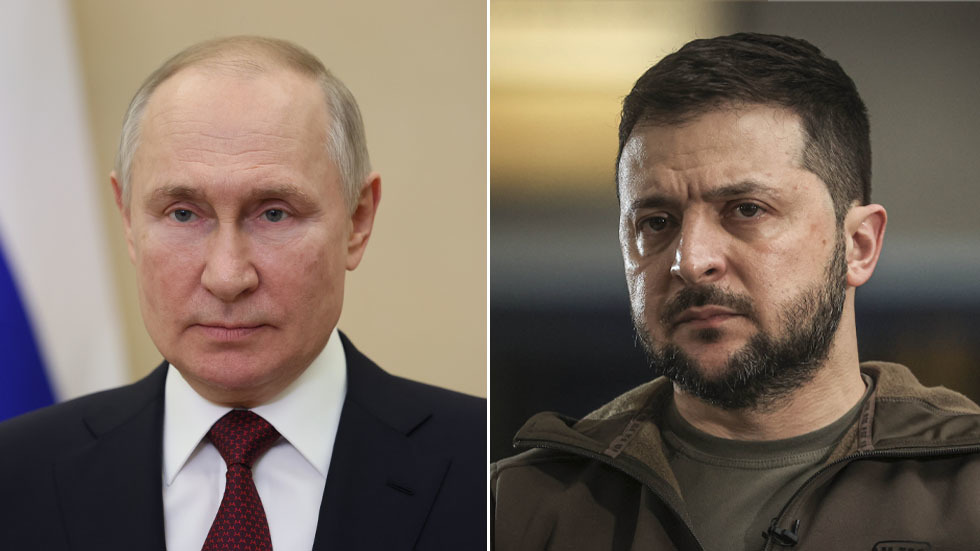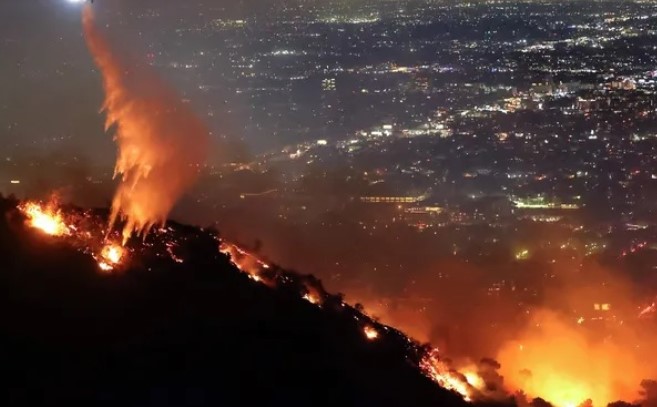
The foto has taken from moscowtimes
STRATEGIC ASSESSMENT. After more than two decades of focusing on violent non-state actors, 2022 may well be remembered as the year when the pendulum swung back in the other direction. Russia’s invasion of Ukraine in February was the defining moment of the year and could prove to be even more historic, depending on how the situation develops in 2023. Despite predictions of irrelevance, NATO is more relevant than ever and countries like Germany have altered their military posture to become more amenable to supplying Ukraine with high-quality weapons systems.
The return of inter-state war was merely a matter of time, especially as the international system continues to shift from a unipolar structure to a multipolar world defined by great power competition and emerging power blocs, including a more assertive India, shifting dynamics in the Middle East, and transatlantic partnerships like AUKUS, established last year. The largest ground war in Europe since World War II is, however, not the only interstate conflict of concern. In Asia, there are growing fears that China could seek to invade Taiwan in the coming years, cementing President Xi Jinping’s legacy and establishing Chinese hegemony in East Asia. North Korea continues its nuclear saber-rattling and Japan is now building offensive strike capabilities, altering an already delicate balance of power in the region. Moving from East Asia to South Asia, Pakistan has a general election scheduled for 2023 and ongoing political unrest in Bangladesh could be drivers of regional instability in an already combustible, nuclear-armed neighborhood.
2022 was not a particularly good year for autocrats. Russian President Vladimir Putin has suffered through an ill-planned and poorly executed invasion of Ukraine, with Russian forces experiencing humiliating defeats on the battlefield. Xi Jinping, although he prevailed in China’s internal political maneuvering by securing a stranglehold over leadership within the Chinese Communist Party (CCP), was forced to backtrack on his “Zero Covid” policy. This rare admission that the party got something wrong followed weeks of escalating protests throughout the country, with an increasing number of Chinese migrants fleeing the country and traveling the U.S. via the Central American route. In Iran, three months of women-led protests have continued against the regime following the death of 22-year-old Mahsa Amini, jailed for violating the country’s draconian dress code for women that requires a headscarf in public. Meanwhile, Western countries were bolstered by the addition of Sweden and Finland to NATO, a much-needed victory for the democracies supporting Ukraine’s fight for survival.
And while counterterrorism seems to have been downgraded among Western countries as an issue of concern, the threat itself has merely evolved and shifted its center of gravity. For jihadist terrorism, the Sahel and sub Saharan Africa are key regions of concern, where jihadist affiliates of al-Qaeda and Islamic State continue to operate with relative impunity, launching attacks on police and security services and conducting terrorist bombings that kill and injure large numbers of civilians and threaten prospects for political stability and democracy. In 2022, the lion’s share of terrorist attacks continues to occur in conflict-affected countries, highlighting the enabling environment created by armed conflict for terrorism. The most lethal terrorist attacks of the year happened in Nigeria, Mali, Somalia, and Burkina Faso. According to the Global Terrorism Index (GTI), the Sahel region “has become increasingly more violent over the past 15 years, with deaths rising by over one thousand percent between 2007 and 2021.” Political instability and the introduction of Wagner Group private military contractors in countries like Mali and Burkina Faso will ensure that the region remains volatile and dangerous, with increased human rights violations potentially feeding grievances and the cycle of conflict.
Islamic State “core,” still hunkered down in various locales across Syria and not without influence in the camps in the northeast, lost two of its emirs this year, before either one could ever utter a public statement. Coupled with the targeted killing of al-Qaeda’s longtime leader Ayman al-Zawahiri, the two primary terrorist threats were dealt decapitation strikes that have impacted both groups’ command-and-control. Both organizations could look to South Asia, and Afghanistan in particular, as a place to rebuild their respective organizations. To date, the Taliban has proven incapable of bringing security to Afghanistan. The Islamic State Khorasan (ISK) has wantonly attached Afghan Shia Hazaras, in addition to launching high-profile attacks against Russian and Chinese interests in Afghanistan. In Syria, thousands continue to remain in squalid sprawling camps in the northeast, perpetuating not only a humanitarian crisis but also an acute security risk as grievances mount ripe for exploitation by terrorist groups. Some states, such as France, have undertaken repatriation efforts, yet the complexity of the situation means thousands continue to languish in dire conditions and accountability for ISIS crimes remains low globally.
While the United States mostly emerged relatively unscathed from the November midterm elections, with concerns over political violence ultimately unrealized, the prospect of domestic terrorism remains a major concern for law enforcement and national security officials. A far-right attack motivated by racism that targeted African Americans at a grocery store in Buffalo, NY in May left ten dead. The attacker was motivated in part by the Great Replacement theory and left behind a manifesto that paid homage to other far-right terrorists, including Brenton Tarrant. The after-effects of the January 6, 2021 Capitol insurrection loom large, with the United States now seen as a net exporter of anti-government extremism and raising the specter of political instability around the next presidential election. Globally, far-right extremism is still a major challenge. A recent wave of arrests of far-right extremists across Germany included a plot to storm the Reichstag, Germany’s parliament, a powerful symbol of its government. Storming prominent government institutions is now a rallying cry of anti-government extremists and accelerationists, and violent far-right groups continue to fuel narratives and disinformation leading to political polarization, anti-government sentiment and the propagation of conspiracy theories. Linkages among far-right extremist movements continue to emerge and deepen, as “new” ideologies – such as Christian nationalism – forge alliances between burgeoning networks of politicians, far-right personalities, and conferences. Historic wins by far right populist parties, such as in Italy, potentially bolster these global networks and display the power of far-right narratives among Western electorates.
Factors like climate change, energy and food insecurity are also likely to stoke grievances and dissatisfaction with governments or international actors, serve as a threat multiplier, and ultimately lead to skyrocketing humanitarian needs globally. Such factors will continue to fuel historic levels migration around the world, as many Western governments continue to tighten borders without comprehensive reform leading to riskier behavior – such as utilizing illicit groups to cross borders. A recently adopted UN Security Council resolution establishing a historic humanitarian “carveout” across all sanctions regimes – mirrored in a recent move by the U.S. Treasury to ease the delivery of humanitarian aid and ensure a baseline of authorizations for the provision of humanitarian support across many sanctions programs – reflects the urgent humanitarian needs predicted in multiple settings, and its implementation will be an important ingredient in determining the kinds of risks and needs emerging in 2023 (TSC).





